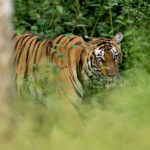I am a Leopard not a Cheetah!!
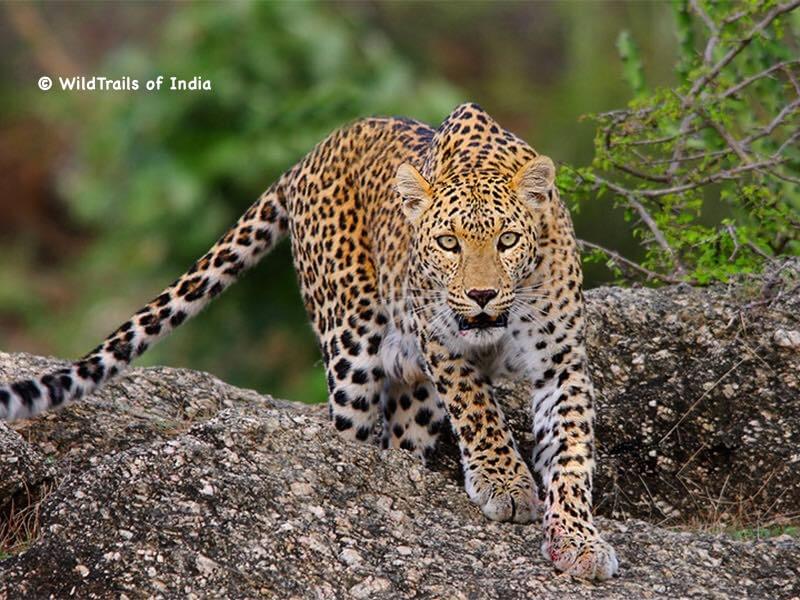
![[The WildTrails of India app is the best way to get all the details about Indian wildlife sanctuaries (best travel times, safari details, animal sightings, forest accommodations pairing, wildlife related activities, prices, etc). Learn more about WildTrails of India here.]](https://wildtrails.in/wp-content/uploads/2015/10/Photo-28-09-15-2-54-09-PM-1024x763.jpg)
Most people here when they come to see me in a wildlife safari or for that matter when I come to see you all say in schools in Bangalore (:-)) , they call me Cheetah. No I am NOT!!! Please don’t call me a Cheetah (even though I am referred in Kannada as “Chirate” but not Cheetah).
There is a huge difference the way we are built and they way we run. We max at 58 kms per hour (36 mph) but they can run up to a speed of 110-120 kms per hour. They are lean built (no wonder they run so fast) but we are much stronger. We are everywhere in India but unfortunately they are extinct here and you can find them (the Asiatic Cheetah) only in Iran and of course Cheetah’s are present everywhere in Africa and elsewhere. BTW Cheetahs are known to hunt their prey during daytime whereas we generally hunt during the night. They also differ in other physical and behavioral characteristics which I am noy going to dig too much into it but just have a look at this video and you will never confuse me ever again with a Cheetah!!
While we are at it, let’s learn some facts about myself (i.e Leopards!!!! – Over to about Leopards!!!!
The leopard is one of the five “big cats” in the genus Panthera. It is a member of the family Felidae with a wide range in regions of sub-Saharan Africa, West Asia, the Middle East, South and Southeast Asia to Siberia. The other four big cats being – Lion, Tiger, Jaguar and the Cheetah .
Leopards has relatively short legs and a long body with a large skull. It is similar in appearance to the jaguar, but is smaller and more lightly built. Its fur is marked with rosettes (spots) similar to those of the jaguar, but the leopard’s rosettes are smaller and more densely packed, and do not usually have central spots as the jaguar’s do. Both leopards and jaguars that are melanistic are known as black panthers. (Please note that black panthers are not a separate species but a skin color condition that happens and note that they still have the spots under that black coloration)
Based on where they are native of, leopards are further classified as
- African Leopard
- Indian Leopard
- Arabian Leopard (Native to Arabian Peninsula)
- Persian Leopard (Native to Central Asia)
- North-Chinese Leopard
- Amur Leopard (or Siberian Leopard – found in the Far East Cold regions)
- Indochinese Leopard (South east asia and south china)
- Javan Leopard (Indonesian island of Java)
- Sri Lankan Leopard
Appearance:
Leopards tend to have distinctive dark spots called rosettes, which create beautiful patterns against their otherwise light fur.
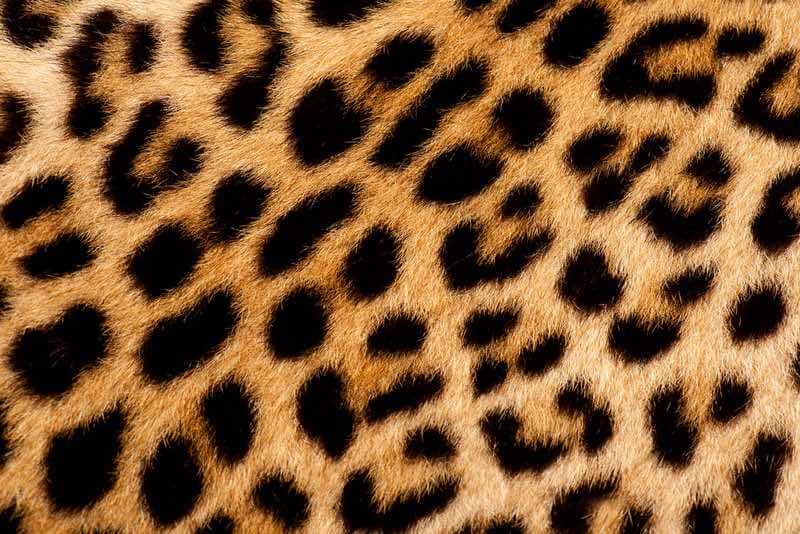
There are also black leopards which get confused with panthers, but panthers are completely black whereas black leopards still have rosettes which can be seen from a certain angle but their dark fur makes it difficult to see the spots. They appear almost solid black and are often called black panthers.
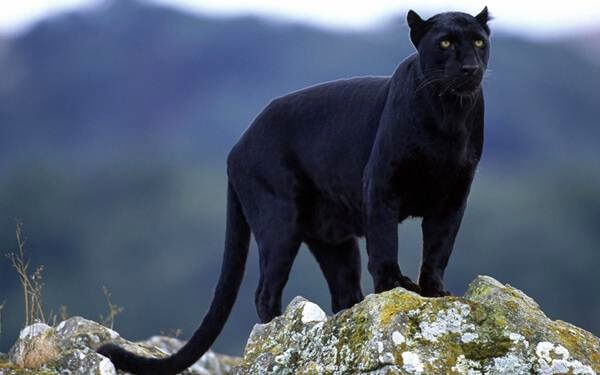
Habitats & Home Ranges
Leopards have the widest range of habitats of all the big cats. This adaptability has allowed them to survive in various different geographic areas. Perhaps the most extreme example is the amazing snow leopard which lives in the Himalayas.
Home ranges of male leopards vary between 30 km2 (12 sq mi) and 78 km2 (30 sq mi), and of females between 15 to 16 km2 (5.8 to 6.2 sq mi). [in Comparison, male Tiger’s home range varies from 70 sq.kms to 100 sq. kms]
They mark their ranges with urine and leave claw marks on trees to warn others to stay away.
Physical Features
Leopards are astoundingly strong. They are pound for pound the strongest of the big cats.
Leopards are skilled climbers, and like to rest in the branches of trees during the day. They are strong beasts and can carry their heavy prey up into the trees so the scavengers and other predators don’t steal their meal.
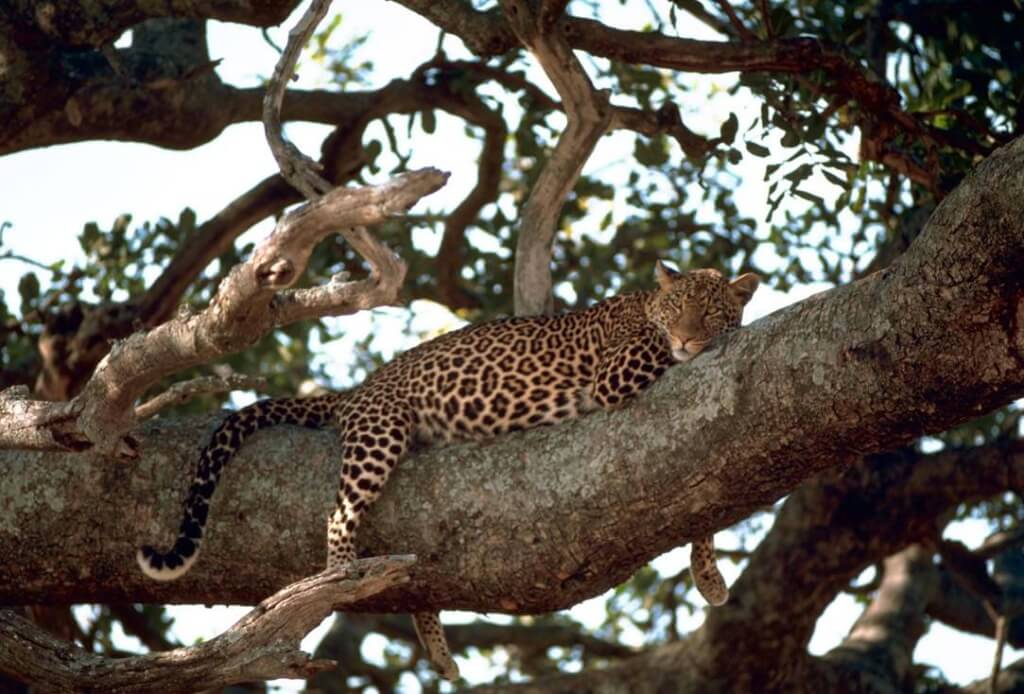
Leopards are renowned for their agility. They run up to 58 km/hr and can leap 6m horizontally and 3m vertically.
They are also very strong swimmers.
The leopard is the most elusive and secretive of the large cats. They are extremely difficult to trace and locate in the wild.
Leopards, although they are smaller than most other members of the genus Panthera, they are able to take large prey due to their massive skulls that facilitate powerful jaw muscles.
Communicative calls
A leopard’s call is called ‘rasping’, it is a rough, deep call that announces their presence to other leopards.
Like domestic cats, leopards will growl when angry and purr when content.
Reproduction & Cubs
Leopards are predominantly solitary animals that have large territories. While male territories are larger than females and tend to overlap, individuals usually only tolerate intrusion into ranges for mating.
When female leopards are ready to mate they will mate with many of the dominate males near her territory. This takes away the risk of the cubs being killed by one of the rival dominate males because they will think that the cubs are theirs.
They give birth any time of the year – when they do, they usually give birth to two or three cubs. Mothers stay with their cubs until they are about 2 years old (when they are old enough to hunt and take care of themselves). Cubs suckle for around 3 months and are kept hidden for about the first 8 weeks to protect them from predators.
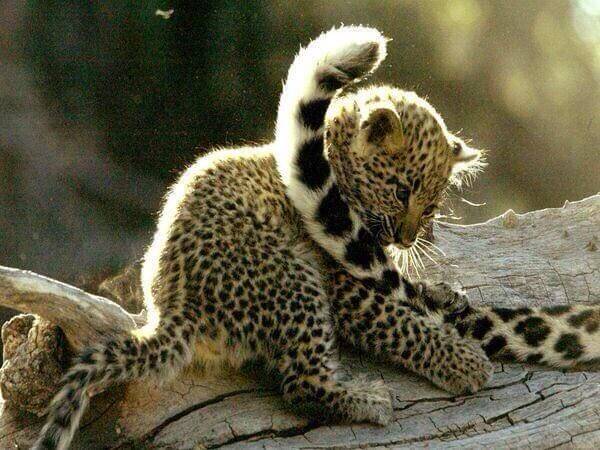
Leopard cubs are born blind and are completely dependent on their mothers. Their eyes begin to open after about ten or more days and for the first few months their eyes are bright blue.
The cubs are also born without a clear coat of spots, the spots begin to develop after a few days.
Only half the cubs from a litter will on average survive to adulthood.
DIET & HUNT
These big cats have a varied diet and enjoy different kinds of grub. They eat bugs, fish, antelope, monkeys, rodents, deer, birds, fowls, pretty much any prey that is available.
When a leopard spots a potential meal, it approaches with legs bent and head low, so as not to be seen. It then stalks its prey carefully and quietly, until it’s five to ten metres within range. Then they pounce! The leopard dashes forward and takes down its victim with a bite to the throat or neck. Small prey, such as small birds or mice, will receive a fatal blow from the felines paw.

Leopards are Nocturnal animals and are active at night when they venture out in search for food. They spend their days mostly resting, camouflaged in the trees or hiding in caves.
Leopards sometimes hunt from trees, they are very opportunistic animals and will hunt any kind of prey they can find from small birds, lizards and mice to eagle chicks and impalas.
One reason why leopards sometimes take their prey up in the trees is to ensure other predators or the scavengers can’t steal them.
Age & Death
Average Lifespan of leopard varies from 12 – 17 years
It is thought that when leopards are old and preparing to die they return to the place where they were born.
In India
In India it is observed that a huge percentage of them (more than 30%) live outside the protected area and very close to human settlement and even in semi-developed areas. Due to the leopard’s superlative stealthiness, people often remain unaware that big cats live in nearby areas.
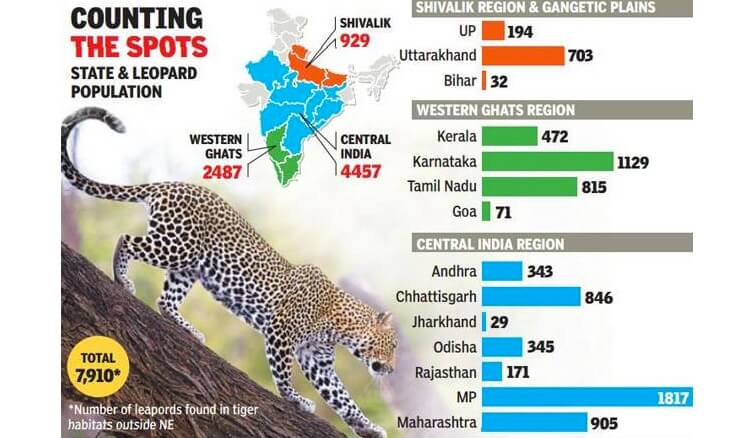
Madhya Pradesh has the highest number of Leopards in India closely followed by Karnataka.
Leopard Sighting during Wildlife Safari
Your best chances of watching a Leopard on a wildlife safari in the south is in Kabini Nagarhole and Bandipur. In fact Nagarhole has the best density of leopards in the south and Kabini is called the Leopard Lair!!
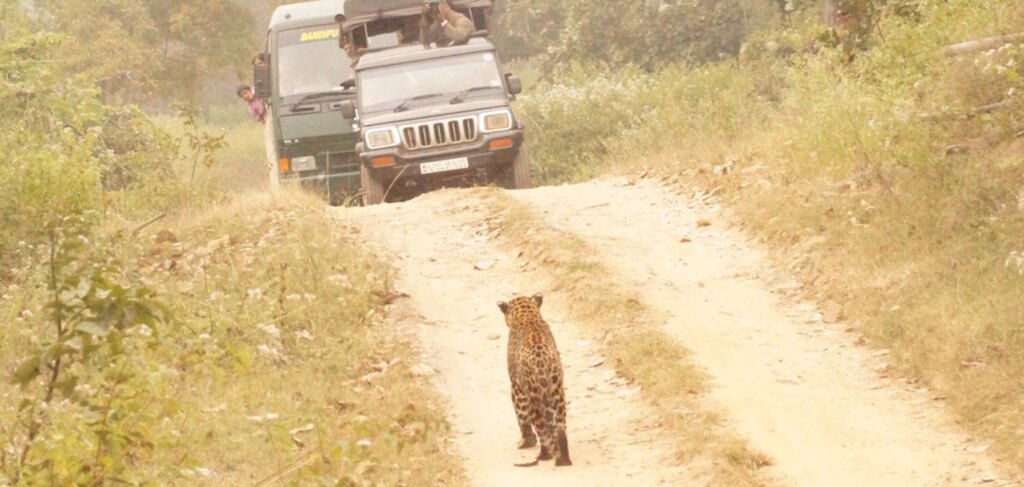
While you at a Safari at Nagarhole Kabini, try spotting one on the tree branches but when you are a Safari say Bandipur, try spotting them on the land, between the bushes. [So anyone thinking why is it that way????? Let me know if you can find the answer :-)]
To see a black panther, best place to visit are Dandeli-Anshi reserve [Kali Reserve], Bhadra Tiger Reserve and now in Nagarhole Kabini [all in Karnataka]
Related stories on Leopards:
The Trapped Leopard left far away will come back!!
Leopards in the Cities
Leopards counted in India but do they love to live in Tea Estates?
————————————–
WildTrails of India – “One Stop Destination for all Indian Wildlife Enthusiasts“
PS: Please be a responsible wildlife tourist; No littering, No sounds, No feeding, no getting down from the safari jeep (when on safari), No phone calls. Remember that we are visiting their home and when we are there, let’s follow their rules.
[The WildTrails of India is the best way to get all the details about Indian wildlife sanctuaries (best travel times, safari details, animal sightings, forest accommodations pairing, wildlife related activities, prices, etc). Learn more about WildTrails of India here. ios App is here. Android here, facebook page here ]
With 4 years of Sightings data + Extensive expert tracker network in jungles, our customers had the best wildlife experiences.
Buy Wildlife Fashion Accessories
Exclusive Online Store for wildlife products
Packages
Packages Loading...
Recent Posts





